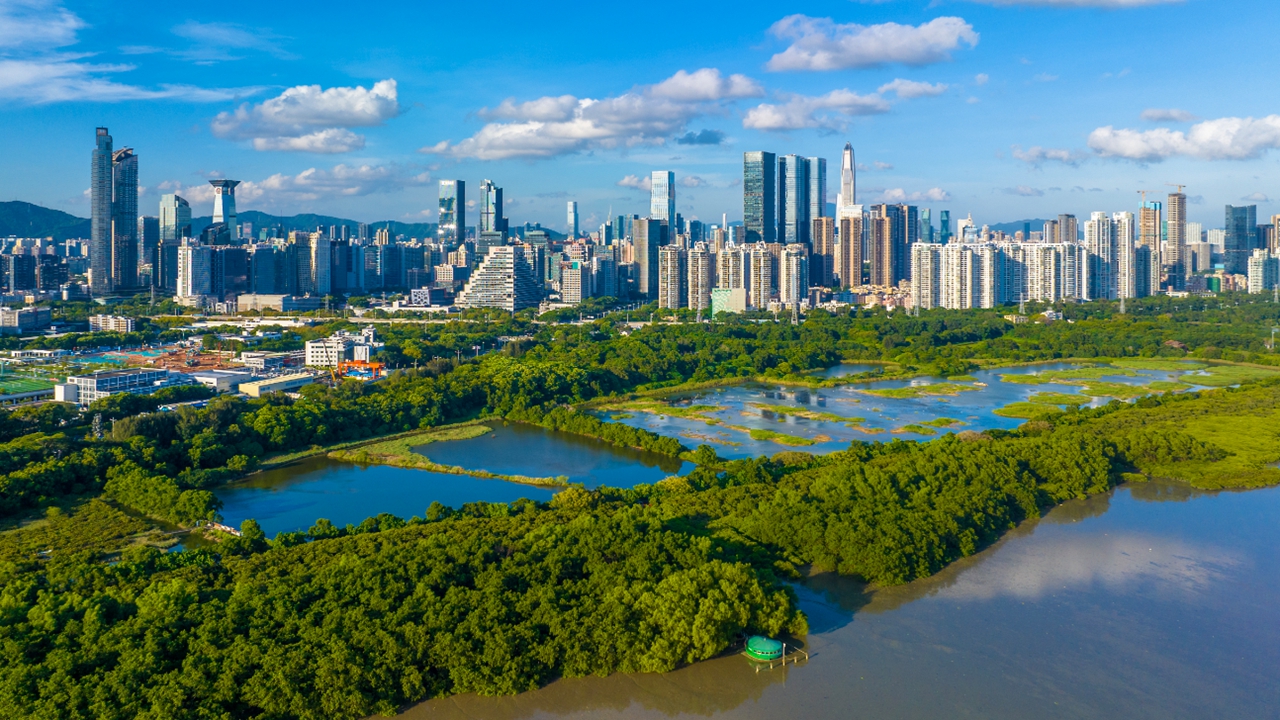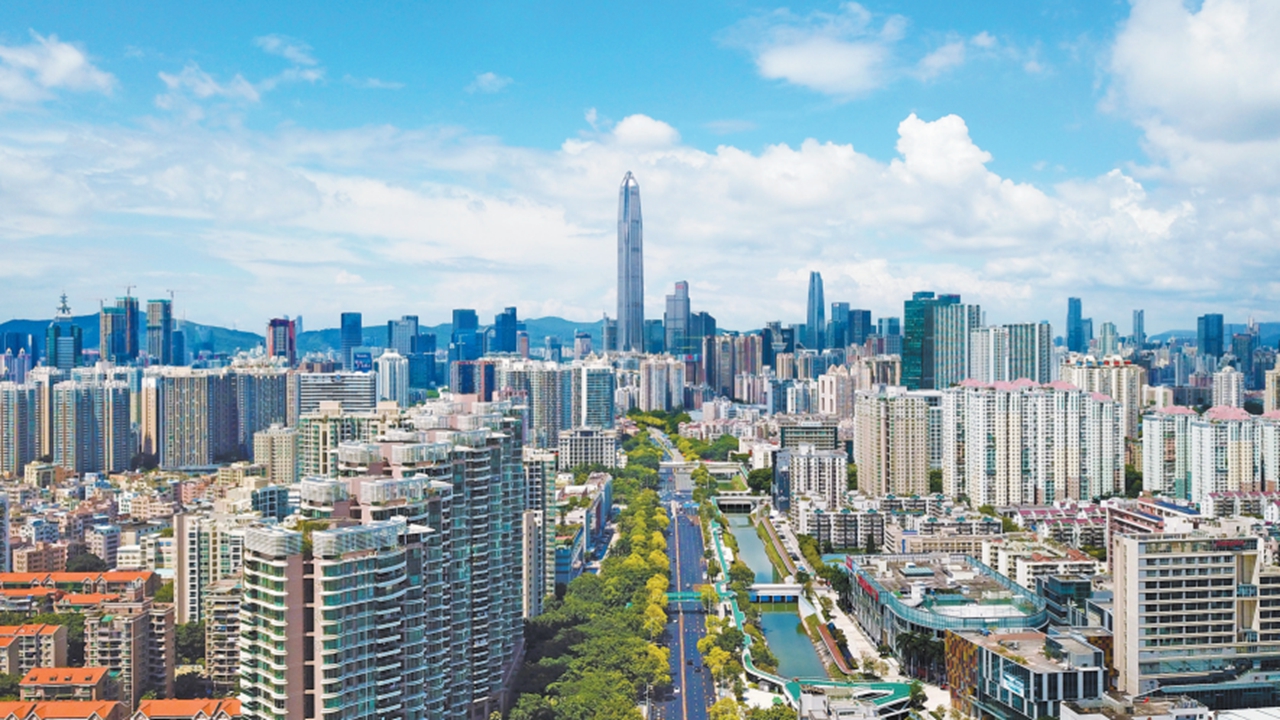Intl. Mangrove Center tops reform agenda for natural resources
Writer: Wang Jingli | Editor: Lin Qiuying | From: Original | Updated: 2025-09-05
The Ministry of Natural Resources and the National Forestry and Grassland Administration have recently released measures supporting Shenzhen’s comprehensive reforms in the natural resources sector, with the construction and utilization of the International Mangrove Center (IMC) as the top priority task. This was announced during a news conference held by the city government Thursday in Shenzhen.
 An aerial view of a mangrove forest in Shenzhen. Photos from WeChat account “深圳发布”
An aerial view of a mangrove forest in Shenzhen. Photos from WeChat account “深圳发布”
According to Bao Daming, acting secretary-general of the Interim Secretariat of the IMC, the Secretariat of the IMC will focus on five key areas — projecting a positive national image, building a strong international platform, effectively telling China’s stories, enhancing Shenzhen’s capacity, and strengthening the center’s development — to ensure the IMC is successfully established and effectively utilized.
With the recent accession of Zimbabwe and Sudan, the number of countries intending to join the IMC has risen to 20.

An aerial view of the coastline in Bao’an District.
Shenzhen is now the third city in China, after Beijing and Shanghai, to host the headquarters of an intergovernmental international organization. Shenzhen will fully leverage its role as host and provide comprehensive support in staffing, facilities, funding, and international cooperation to lay a solid foundation for the successful building of the IMC. The inaugural council meeting will be held soon, Bao said.
He added that the center will continue to fulfill its responsibilities by attracting more countries and international organizations, advancing global initiatives for mangrove conservation and restoration, building a platform for education and public awareness, and promoting successful cases worldwide. The IMC also aims to position Shenzhen as a global hub for funding, knowledge, and coordination in mangrove wetland conservation.
The new measures include 20 reform initiatives across five areas designed to help Shenzhen transform its urban development model and set a benchmark for high-quality growth among megacities.
They focus on optimizing and strengthening five domains: natural ecology, land use, the marine economy, digital intelligence, and regional collaboration. The initiatives are intended to accelerate spatial governance toward green and low-carbon development, efficient resource use, smart management, safety, and integrated coordination.

An aerial view of the downtown area along the Xinzhou River in Futian District.
Beyond the IMC, support for Shenzhen includes establishing a key laboratory for geological safety and risk prevention, undertaking major marine science and technology projects, developing an international maritime arbitration center, transforming resources such as low-altitude airspace into new drivers of growth, strengthening cooperation with Hong Kong to build a world-class twin-city metropolitan area, and promoting integrated development with Zhongshan, Dongguan, and Huizhou.
Officials said Shenzhen aims to provide reform experiences and models that can be applied nationwide.